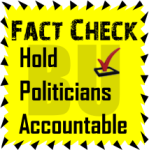Reproduced from 
 It’s a common notion that part of the reason why so many people are overweight and obese and saddled with diet-related chronic diseases like heart disease and type 2 diabetes is because they simply can’t afford to eat healthy. But are healthy foods really more expensive than their junk food counterparts?
It’s a common notion that part of the reason why so many people are overweight and obese and saddled with diet-related chronic diseases like heart disease and type 2 diabetes is because they simply can’t afford to eat healthy. But are healthy foods really more expensive than their junk food counterparts?
An interesting opinion piece in the New York Times, by columnist Mark Bittman, argues that you can actually feed your family home-cooked meals for less than it costs to go to McDonald’s. Most people can, in fact, afford real food, Bittman argues. Which means, of course, that money alone doesn’t guide decisions about what to eat. In fact, the convenience, pervasive presence, and the addictive nature of processed food may be far more important factors.
Is Junk Food Really Cheap?
Most families nowadays are juggling not only tight schedules but also tight budgets, and when it comes time for dinner, a $1 hamburger from a fast-food “value menu” may seem like a frugal option. You have the U.S. government to thank for that $1 hamburger, as U.S. food subsidies are grossly skewed, creating a diet excessively high in grains, sugars, and factory-farmed meats. So there is some truth to the idea that junk foods can be cheap.
But if you’re basing your family’s diet on fast-food dollar menus, you are quite literally fueling future disease, which will exact a hefty toll on your family physically, emotionally and financially down the road. Perhaps you already know that fast-food is not the healthiest option, but you’re thinking, “I have $10 to feed my family of four, and I get off work at 7 pm, what else can I do?” Actually, quite a bit, which I’ll detail below. The reality is, any money spent on junk food is an absolute waste, not a bargain!
Why Spend Money on Food That Will Make You Sick?
While it’s certainly possible to find cheap junk food, much of it is actually quite expensive. I’m often surprised at the prices people are willing to pay for breakfast cereals that are nothing more than sugar, bags of chips that offer nothing good for your body, soda that is an absolute health disaster … these pricey processed foods will eat up your grocery budget in the blink of an eye and will actually cause disease in the long-term.
The fact that manufacturers are able to keep pulling the wool over people’s eyes, convincing them that these products are “foods” worthy of buying is nothing more than a marketing victory, albeit a very persuasive one.
As Bittman writes:
“It’s not just about choice, however, and rational arguments go only so far, because money and access and time and skill are not the only considerations. The ubiquity, convenience and habit-forming appeal of hyperprocessed foods have largely drowned out the alternatives: there are five fast-food restaurants for every supermarket in the United States …
… Furthermore, the engineering behind hyperprocessed food makes it virtually addictive. A 2009 study by the Scripps Research Institute indicates that overconsumption of fast food “triggers addiction-like neuroaddictive responses” in the brain, making it harder to trigger the release of dopamine. In other words the more fast food we eat, the more we need to give us pleasure; thus the report suggests that the same mechanisms underlie drug addiction and obesity.”
Since junk food is convenient, for the most part affordable, addictive and created to appeal to your taste buds, the system is orchestrated to keep you buying more junk food in lieu of real food, and the more you do this, the more you’ll lose touch with the foundations of healthy eating — and your kids may grow up never knowing the value of a home-cooked meal. So getting back to the original question, how to feed a family on a very limited budget, with a limited amount of time, the answer lies in choosing foods for their nutritional value, first and foremost, as well as planning out your meals carefully.
How to Eat Real Food on a Budget
In order to protect your health, I believe you should spend 90 percent of your food budget on whole foods, and only 10 percent on processed foods (unfortunately most Americans currently do the opposite). This requires three strategies, especially if you’re working with a tight budget:
-
Become resourceful: This is an area where your grandmother can be a wealth of information, as how to use up every morsel of food and stretch out a good meal was common knowledge to generations past. What I mean is getting back to the basics of cooking — using the bones from a roast chicken to make stock for a pot of soup, extending a Sunday roast to use for weekday dinners, learning how to make hearty stews from inexpensive cuts of meat, using up leftovers and so on.
-
Plan your meals: This is essential, as you will need to be prepared for mealtimes in advance to be successful. Ideally this will involve scouting out your local farmer’s markets for in-season produce that is priced to sell, and planning your meals accordingly, but you can also use this same premise with supermarket sales. You can generally plan a week of meals at a time, make sure you have all ingredients necessary on hand, and then do any prep work you can ahead of time so that dinner is easy to prepare if you’re short on time in the evenings.
-
Avoid food waste: According to a study published in the journal PloS One, Americans waste an estimated 1,400 calories of food per person, each and every day. The two steps above will help you to mitigate food waste in your home, You may also have seen my article from earlier this year titled 14 Ways to Save Money on Groceries. Among those tips are suggestions for keeping your groceries fresher, longer, and I suggest reviewing those tips now.
Some of the Healthiest Foods are Under $1
When choosing real foods to feed your family, remember that some of the healthiest foods are incredibly affordable, even under $1 a serving, such as:
-
Raw organic milk
-
Raw nuts and seeds
-
Two cage-free organic eggs
-
Avocado, berries and broccoli
-
Fermented foods you make at home
Ideally, choose foods that are organic and locally grown, keeping the following ground rules in mind:
-
The most important foods to buy organic are animal, not vegetable, products (meat, eggs, butter, etc.), because animal foods tend to concentrate pesticides in higher amounts.
-
Grass-feed beef is far healthier than grain-fed beef (which I don’t recommend consuming). To keep cost down, look for inexpensive roasts or ground meat. You may also save money by buying an entire side of beef (or splitting one with two or three other families), if you have enough freezer space to store it.
-
Buy in bulk when non-perishable items go on sale. If you are fortunate to live near a buyer’s club or a co-op, you may also be able to take advantage of buying by the pound from bins, saving both you and the supplier the cost of expensive packaging.
The Gold Standard: Local and Organic
In a perfect world, all of the food you purchase for your family would be locally grown and organic. This gives you the best of both worlds: food that is grown near to you, cutting down on its carbon footprint and giving you optimal freshness, as well as grown without chemicals, genetically modified seeds, and other potential toxins.
Without both, you risk getting chemically loaded, CAFO (confined animal feeding operation) foods that are grown nearby, and thus passed off as “local” and “natural,” like Wal-Mart and other mega-corporations often do. As written by Ronnie Cummins and colleagues for the Organic Consumers Association:
“Greenwashing CAFO products as “natural” or “local” is a major source of profits for Wal-Mart, Cargill, Conagra, Perdue, Land O’ Lakes, Kraft, McDonalds, KFC, Monsanto and chemical/GMO farmers and ranchers.
… These animal factories, where GMO feed and drugs are force-fed to most of the nation’s livestock and poultry, are not only poisoning consumers, but are also generating massive amounts of climate-destabilizing greenhouse gases, especially methane, which is 72 times more destructive per ton than CO2. Methane (CH4) pollution is responsible for approximately 14% of human-induced global warming.
… Millions of consumers are still in the dark about how “conventional” foods – especially the cheaper brands of animal products, processed, fast, and fake foods – are produced.”
Avoid wasting your money on these types of “local” CAFO products that are common in large supermarket chains. Instead, seek local and organic food, or locally grown food that you can verify has been grown naturally. To find these types of real foods, grown by real farmers, not corporations, visit LocalHarvest.org. You may be surprised to find out that by going directly to the source you can get amazingly healthy, fresh food for less than you can find at your supermarket.


















Here is a bit more on Vaucluse …. over at BFP!!
Looks Like John Alleyne Simmons, the son of a slave, also owned alot of land in Canada as well as Vaucluse Plantation in Barbados.
… and there was a sister as well.
… and here’s what happened to the two children of Joshua Steele and Anastasia the slave, viz Katherine and Edward ….. when Kendal was inevitably sold in Chancery in 1815 and the charges created against the plantation by his sister were paid to his children .
From Queree we learn:
1815 262/187 Chancery Court Sale of “Kendal’s”, “Chesters” and “Halletts” pltns now called “Kendal’s” pltn for £45,000, 747 ac, St. John and St. Philip. Among debts £10,000 each to Katherine White, née Steele and Edward Steele, both resident in England. These bequests made by Mary Ann Steele and charged on Kendal pltn, purchased by William Prescod
Bounders: John Poyer (Henley), George Barclay, Thomas Hollingsworth (Halton), Thomas Sealy (Cliff), Richard Earl Drax Grovesnor (Drax Hall), John Hothersall Pinder (Ashford)
Looks like the new owner of Kendal became William Prescod who bequeathed it to his nephew William Hinds Prescod who was the father of …………………..
…… it is said … Samuel Jackman Prescod.
Small world!!
It is I think easy to understand why emancipation in 1834 is seen as no big thing by many Bajans.
We now have kadooment on the first monday of August whether it is the 1st or not.
There is usually only a handful of persons we see in the press taking part in the remembrance of 1st August when it comes.
I think the reason is that freedom was being given to the offspring of slaves and their owners for years before emancipation actually happened.
They formed a class “above” the slaves.
They were referred to as free mulattos.
They were forced to develop survival strategies to get them and their families through a period when they had to depend only on themselves. Emancipation meant little for them except it created increased competition and forced them to develop new strategies of survival.
Freedom was also being given to a second class of slaves, from as early as the 1600’s. Some Quaker owners set free their slaves ….. I believe I have another ancestor who was so freed in 1721, almost a century before my slave owner ancestor manumitted his mistress and more than a century before emancipation.
These freed slaves were referred to as free Negroes.
They formed a second class, also “above” the slaves.
Like the free mulattos, they also had to develop strategies for survival and depend on themselves because they were faced from increased competition.
When emancipation was proclaimed, a third class of freed slaves came into existence.
Every body had to develop new strategies.
I think these three origins of freedom of our ancestors explain the various classes of the bulk of persons who are said to exist in Barbados today.
First, there are those set free from the 1600’s because their owners made a conscious decision based on principle to do so.
Second, there are those set free as a result of blood relation … from the 1600’s to 1834.
Third, the largest class comprises of those set free because the law of the land changed in 1834.
…. but that’s just a theory!!
@John: “…but that’s just a theory!!
Theory is where we all begin.
Now the question is, will your theory stand up to scrutiny.
That’s why I put it up!!
@John: “That’s why I put it up!!
Excellent.
Island Gal,
Bajan men egos are too fragile for such truth, girl, hope you ain’t marry a bajan.
Pingback: Man Turn On De Stove! |
Islandgal
Murdahhhhhhhhhhhhhhh. ‘na roses from de graveyard’.
dat is a classic.
ahamoment
Islandgal marrid ta a bajan but he kno how to charm she, so she’s in good stead.
Island Gal…in a ‘nutshell’ you have got the balls rolling,,,ha ha haaaa!
http://www.caribbean360.com/index.php/business/511514.html?utm_source=Caribbean360+Newsletters&utm_campaign=d25fd42fc8-10_20_2011&utm_medium=email#axzz1bkWgGy4v
@John
That is what you called leadership.
Will it ever happen in Barbados?